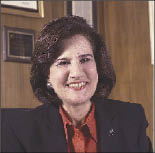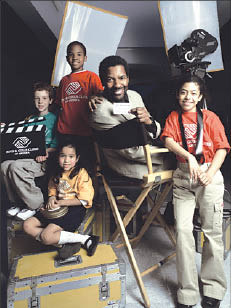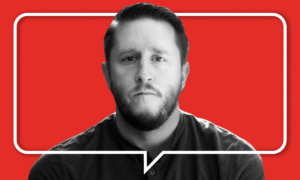 |
Gary Cain, executive director of Boys & Girls Clubs of Central Florida, remembers nearly falling out of his chair at a board meeting one day in 1995. Over the next five years, a board member said, the organization needed to double the number of youth that it served.
“It seemed insurmountable,” Cain says.
Today, Cain believes that “you either grow or you die.” During his 13 years at the helm, his agency has grown from serving about 3,000 children at eight clubs to serving 14,000 at 31 sites.
That turbocharged trajectory reflects the growth of Boys & Girls Clubs of America (BGCA), which in December opened its 4,000th club – up from 1,800 clubs in 1997.
That kind of growth doesn’t just happen. More than ever, some of the nation’s largest youth-serving organizations are aggressively advocating growth – planning for it, pushing their affiliates to carry it out, and even altering their programs to help drive up the numbers. Talk of expansion or “growing to scale” is so commonplace that it’s hard to remember that this is a sea change in the youth-serving field.
Prior to the mid-1990s, notes Glenn Permuy, senior vice president of services to clubs at BGCA, “there was not a lot of big-time growth. It was very gradual.” At Big Brothers Big Sisters of America (BBBSA), Judy Vredenburgh says that when she arrived in 1999 from the corporate world to become CEO, her job was “to galvanize the organization behind serious growth.”
 |
|
Vrendenberg: “We hope to double again in the next five to seven years.” Photo: BBBSA |
Why are youth-serving organizations now pursuing market-penetration plans with the zeal of Coca-Cola and Starbucks? For myriad reasons, including a rise in government funding of after-school programs, an increasing propensity among foundations to fund brand names like the YMCA, and a changing organizational culture in which top executives bring more of a business perspective to the nonprofit world.
The growth movement, however, increases pressure on the national and local organizations. To boost their numbers, some organizations have created “lite” versions of their core services and stretched the concept of the youth they “reach.” In order to serve more youth, affiliates must raise more money and hire more youth workers. They often grow by consolidating programs, merging organizations and combining staff.
The growth movement also raises questions about whether local, unaffiliated organizations will be able to compete for funding and attention, and whether service innovation will suffer at the hands of centralization and standardization.
“My gut feeling is that the more the field is dominated by large agencies, the more the field will approach mediocrity,” says Keith Hefner, executive director of Youth Communication, a New York-based youth media nonprofit. “Fewer wretched programs, but fewer great ones, too.”
Thinking Big
No one epitomizes the shift in attitude more than BBBSA, which has more than doubled its membership since 2000. “Too often in the past at Big Brothers Big Sisters, we thought small – and we got small results,” says John Pearson, CEO of BBBS of Massachusetts Bay, who’s been at the affiliate since 1984. “What we used to call growth was a small percentage each year.”
In the mid-1990s, BBBSA estimated that it was serving about 100,000 children nationwide. In 2000, it counted 119,000. By 2006, the number had shot up to 246,000.
“We hope to double again in the next five to seven years,” Vredenburgh says.
A major factor behind such growth is that the national offices of youth-serving federations have become stronger players in helping local affiliates increase membership. Their most important role, say officials at local affiliates, is enhancing the visibility and value of the agency’s brand.
In 2004, BBBSA re-launched its well-known brand under the slogan “Little Moments, Big Magic.” Kay Keenan, BBBSA’s new vice president of marketing and communications, says the intention was to shift the focus away from “the needy kid waiting on a street corner” to the benefits that adults derive from volunteering. Her marketing predecessors at BBBSA wanted people to talk about the magic, she says, not “the Big driving into the ghetto and worrying about locking her car.”
Also helping are celebrity endorsements – which are big for both BBBSA and BGCA – and advertising by BBBSA during the Super Bowl. BBBSA says it has already received 17,344 more inquiries from potential volunteers this year than it did in all of 2006, when it received 115,656.
In Tempe, Ariz., the Boys & Girls Clubs of the East Valley has grown over the past decade from five sites and a $3 million budget to 11 sites and a $7.5 million budget. CEO Ramon Elias attributes much of that growth to advertising and public relations campaigns by the national office.
“Boys & Girls Clubs used to be the best-kept secret in a community,” Elias says. “You could go five miles from a club, and they wouldn’t know what Boys & Girls Club was.”
Direction From Above
The national offices are also playing a more direct role in the growth of local agencies by raising more money to build capacity, imposing stiffer performance standards and directing consolidation.
The BGCA, for instance, has orchestrated a series of consolidations that have led to fast growth. In Georgia, an organization that began with a single club five years ago evolved into the Boys & Girls Clubs of the Middle Georgia Region, which runs seven clubs in five counties in a rural area. It has gone from serving 100 kids in one facility to 500 across the region, according to its chief professional officer, Chris Martin.
The growth was accomplished by taking over other BGCA clubs and several unaffiliated youth-serving nonprofits. Martin says national staffers tapped his agency “to be the lead organization in the regionalization process.”
A regional service director of BGCA, Ronnie Jenkins, conducted strategic planning sessions with Martin’s board and assisted with funding campaigns. “I contact Ronnie every day,” Martin says.
The national office also provided some seed money for growth. “Not a lot,” Martin says, “but enough to leverage and get matching funds.” The expanding agency has attracted more public funding, such as a Community Development Block Grant to build a new facility in Cordele, Ga.
 |
|
Martin: When you’re big, “it’s easier to get local dollars.” Photo: BGC/Middle Georgia Region |
When you’re big, Martin says, “it’s easier to get local dollars.”
BGCA also rewards local growth by passing through a higher percentage of its federal funds to expanding affiliates. (In fiscal 2006, BGCA got $85 million in federal earmarks.) For Martin’s organization, that meant an additional $100,000 from 2000 to 2005.
Similarly, in 2001 BBBSA hired Marlene Olshan, who had been managing director of a financial-services consulting firm, to start and enlarge a new regional agency in Pennsylvania. Since she became CEO of Big Brothers Big Sisters Southeastern Pennsylvania – formed by the merger of two local affiliates in 2002 – the agency has more than doubled its number of youth served (to 2,934 last year) and its budget, to $3.5 million.
Consolidation has some delicate elements. While Martin says the consolidation of BGCA clubs in Georgia didn’t involve “hostile takeovers,” there was some resistance at first. He says clubs in different rural communities can sometimes act like football rivals. Bringing together everyone under the Boys & Girls Club umbrella has been his biggest growth challenge. “You have to show that all the clubs are being served equally,” he says.
Local Targets
Taking the lead from the national organizations, more local affiliates are setting growth targets as well.
Several years ago, BBBS of Massachusetts Bay – which had 448 active matches in 1996 – set a goal of achieving 2,000 active matches. Last year, it reached 2,069.
The agency recently expanded by merging with BBBS agencies in Greater Attleboro and Cape Cod, Mass.; it has set a target of serving 20 percent of the at-risk youth in its new, wider geographic area.
In California, the YMCA of Santa Clara Valley has seen a jump in funding and youth served as the result of a “very strategic growth plan,” says its vice president of programs and community development, Mary Hoshiko.
In 1996, Hoshiko says, the organization ran 37 licensed school-age childcare programs, with a traditional fee-based structure for families. Then came the dot-com bust in Silicon Valley, leaving many people unable to afford such fees.
Five years ago, she says, the agency’s board set out to increase the number of kids served by subsidized after-school programs. The agency took advantage of federal and state funding streams, aiming to increase enrollment from 2,070 children in 2003 to 3,100 in last year.
“We blew out this year,” Hoshiko says, with an enrollment of 5,500 kids in both the licensed and subsidized programs.
Nationwide, YMCA collaborations with schools have increased by 30 percent over the past five years, according to the national office. The YMCA has about 10,000 school-age programs around the country.
But Barbara Roth, the national office’s specialty consultant for early-childhood and after-school programs, said, “I don’t think we promote growth, per se.”
Resource Pressures
All of this growth puts more pressure on locals to provide services. The challenge of rapid growth at BBBSA affiliates “always boils down to money to hire staff to do the work,” Olshan says. Her affiliate in Pennsylvania has tripled its budget through board contacts, public and private grants, and money passed through from BBBSA. Yet she notes that there isn’t enough corporate support in the Philadelphia area.
“It’s an irrational funding stream in the nonprofit arena,” she says. “If you’re too successful, some people don’t want to fund you.”
Hoshiko of the YMCA of Santa Clara Valley admits that the state and federal funding her agency gets for after-school programs doesn’t fully cover the cost of running them. Her organization is subsidizing each site by $10,000 to $20,000 a year, she notes, which means “taking a hard look at our finances.”
“We don’t know what our tipping point is yet,” Hoshiko says. “How many of these programs is too many?”
One response to the growing need to add resources is the centralization of national networks. It’s a natural trend, says Tom McKenna, former CEO of BBBSA: Centralization supports fundraising, staff training and infrastructure, all of which are hard to build from scratch. “Frankly, youth-serving organizations that aren’t part of national networks are very disadvantaged,” he says.
If funders favor the big brands more and more, will unaffiliated groups find it harder to get money?
Several Youth Today readers said via e-mail that smaller, locally based agencies are usually better able to respond to the particular needs of local youth, based on demographics and community events or culture.
 |
|
Building the brand: Actor Denzel Washington’s role as a national spokesman for the Boys & Girls Clubs of America has helped boost membership and volunteers. Photo: BGCA |
“Community-based agencies generally do a better job providing social services, because of their intimate relationship with the community,” wrote Stan Hamlyn, executive director of CrossRoads Youth and Family Services, based in Victoria, Texas. “Grassroots organizations actually have an investment in the community. … It is hard to get that kind of passion from outsiders.”
One tactic that somewhat mitigates that problem is something you don’t see much in the corporate world: collaboration among agencies that would seem to be competitors. After all, the need for services among at-risk youth who can’t pay for them means that traditional business models provide only part of the blueprint. Rather than elbowing out the competition, some groups pool local resources.
In many communities, BBBSA runs mentoring programs at Boys & Girls Clubs or YMCAs. The 4,000th Boys & Girls Club, in Houston, was created in partnership with the National Football League. It is through such local collaborations – with other brand-name agencies, unaffiliated nonprofits, school districts, parks and churches – that more at-risk youth can be served.
Hoshiko, who has been with her YMCA association since 1982, calls learning to collaborate one of the toughest challenges of growth.
“It’s a learned behavior for our organization,” she says, “one we didn’t have 10 years ago.”































